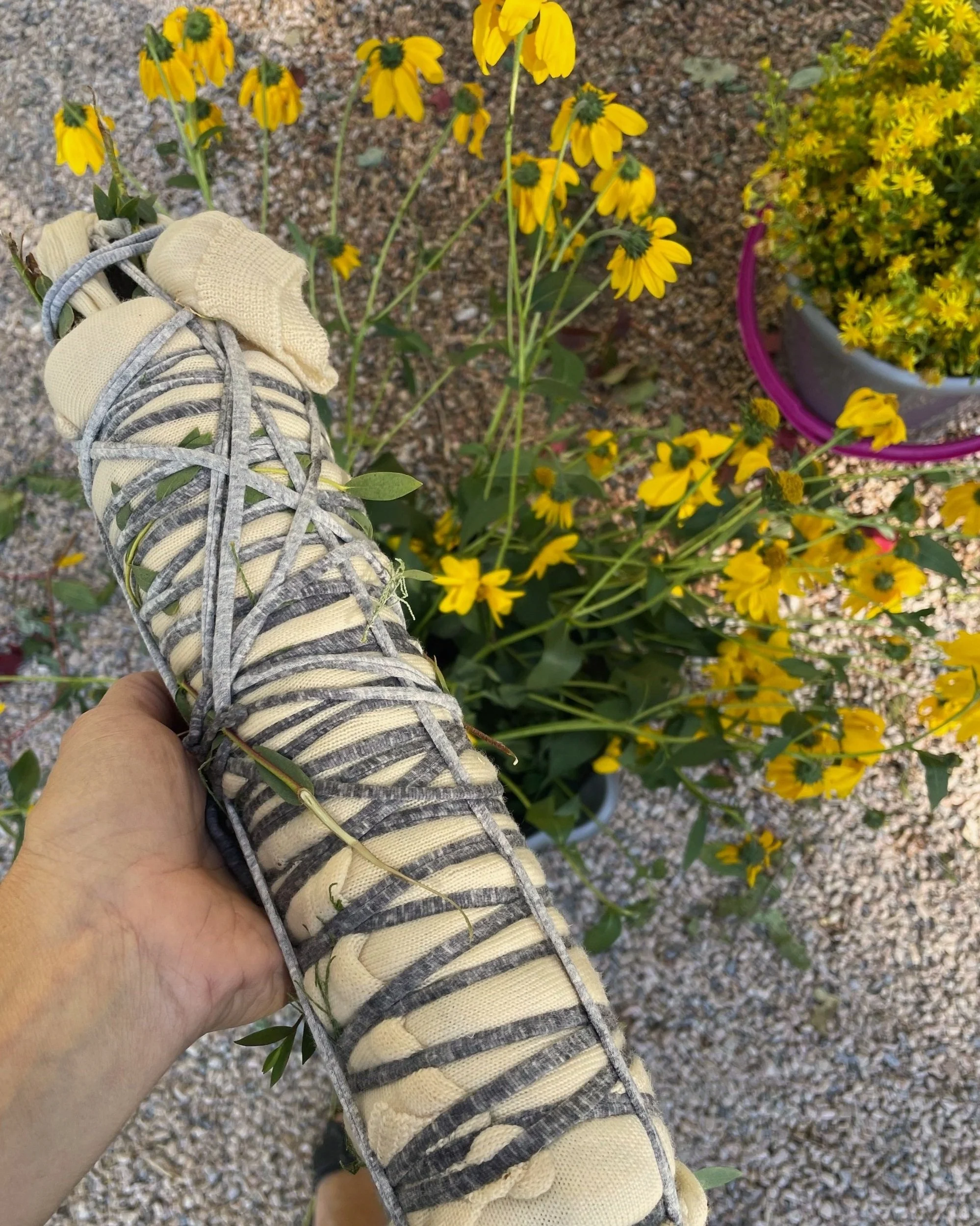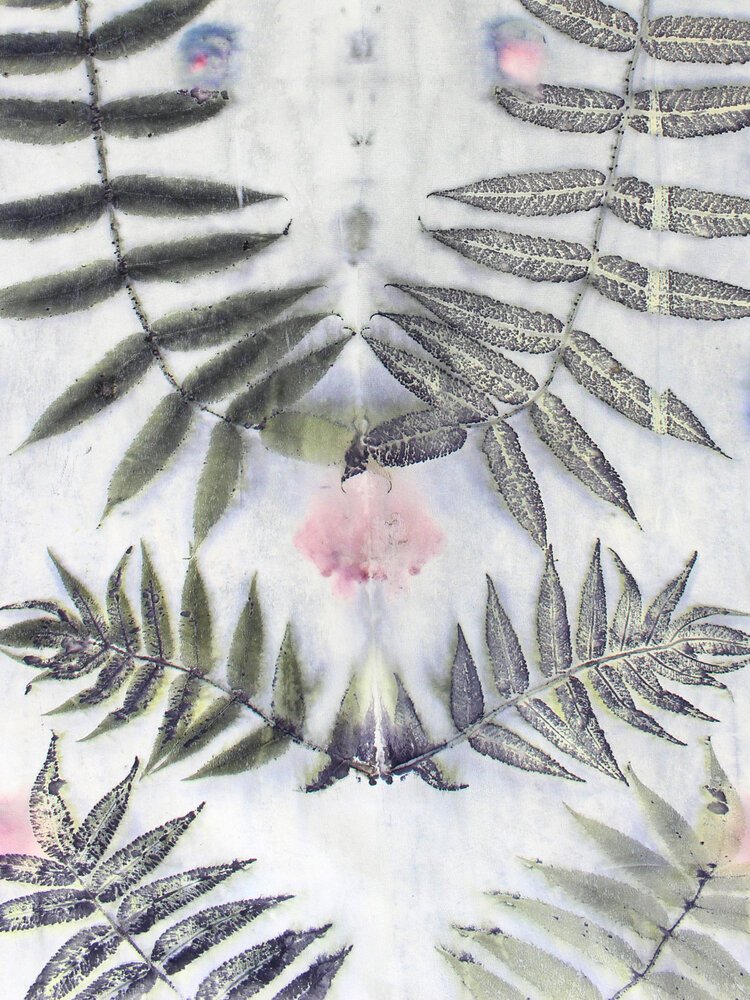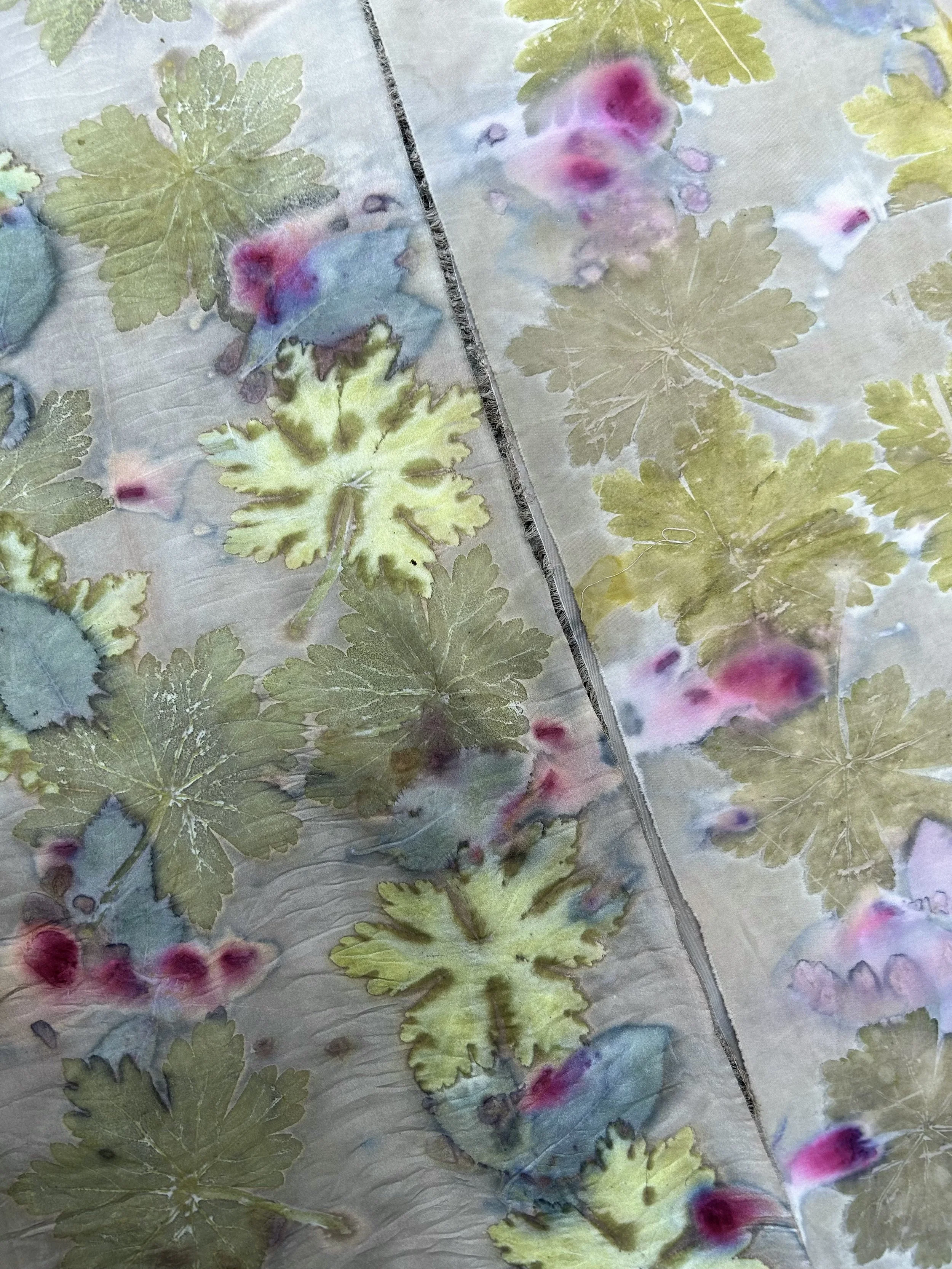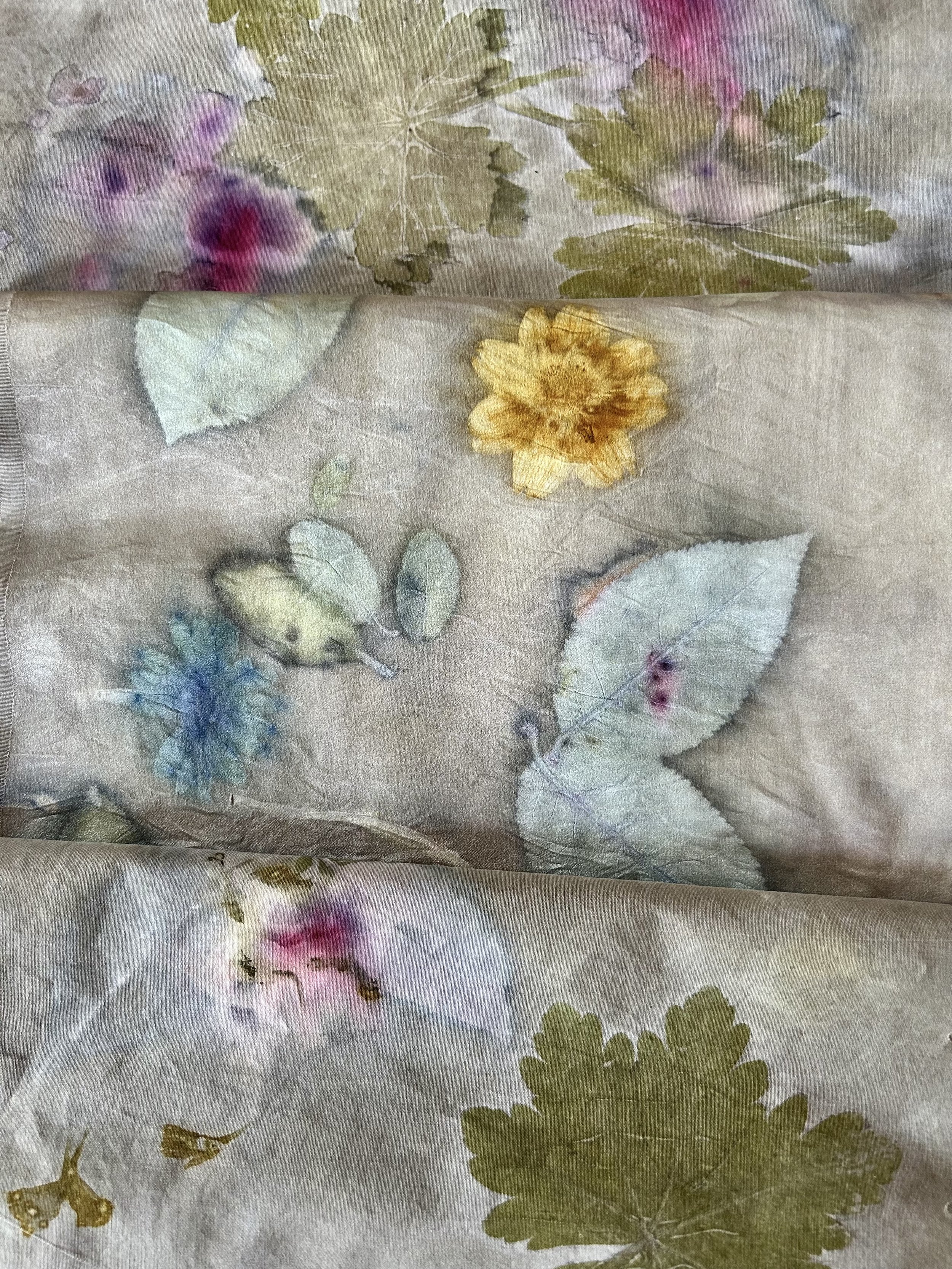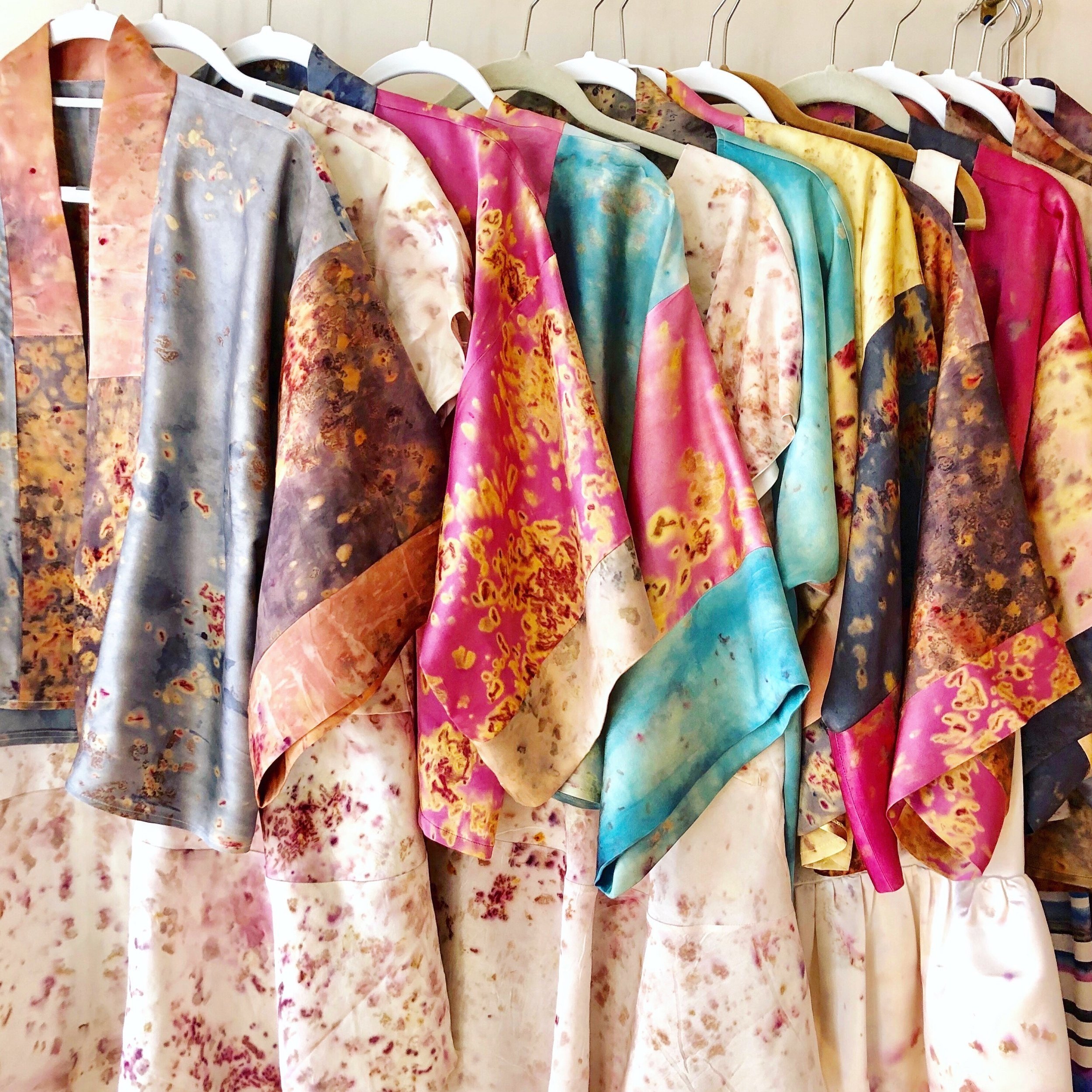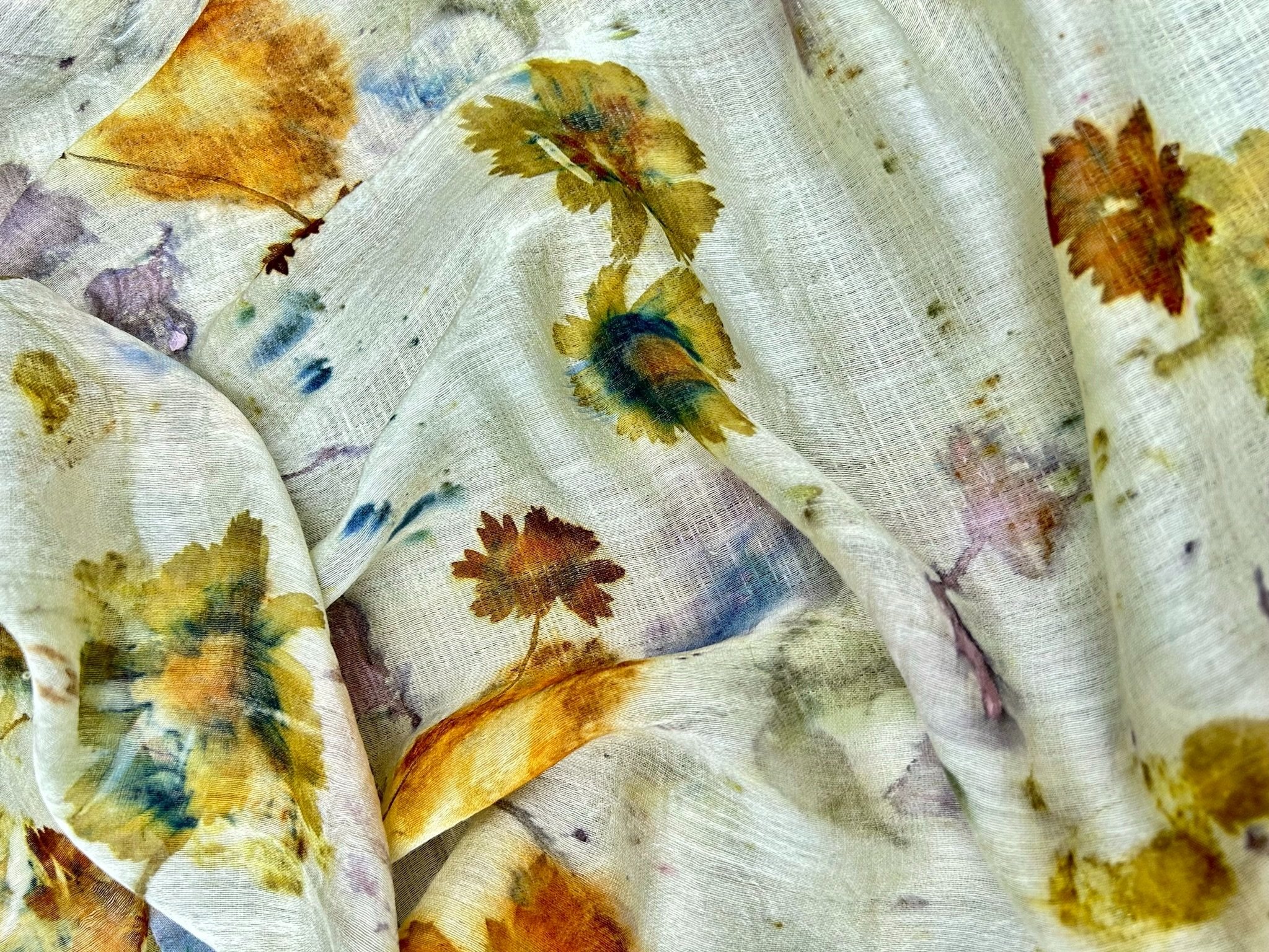
Unlock the magic of
Printing on Protein Fibers
This course is intended to guide the reader in creating botanically printed masterpieces in a self-paced, easy to digest format. I have spent many years experimenting with botanical contact printing on my favorite fabrics: Silk and Wool. With a background in fashion design, I am drawn to the luxurious sheen and strength of these fine natural fibers. Fortunately for us, botanical dyes and plant pigments love protein fibers and stunning imprints can be achieved with a few simple yet crucial steps. This course illuminates the best practices for preparing protein fibers for printing, covers what vegetation to use for mesmerizing results and how to successfully bundle and steam your work for long lasting and colorful outcomes.
Printing with Plants: The Essentials for Silk & Wool
So how do you actually print fabric with flowers and leaves?
Botanical contact-printing, or eco-printing, is an intricate technique that harmoniously merges nature with textile art. By laying plant matter onto fabric and bundling it before steaming, this process allows the natural pigments, shadows, and essence of the plants to transfer directly onto the fibers. The result is a unique, permanent imprint that tells the story of the plants that were used, capturing its colors and textures in a way that evokes the beauty of the natural world. The alchemical transformation during steaming not only preserves the visual characteristics of the botanicals but also creates a deep connection between the material and its organic source.
The most important step in botanical printing is preparing the fabric to accept and maintain the coloration from the plants. This preparation involves pre-treating the fabric with a few key ingredients, such as mordants and fixatives, which help bind the natural dyes to the fibers. By carefully selecting and applying these eco-friendly materials, a world of plant color is unveiled, transforming plain textiles into vibrant, nature-inspired pieces that reflect the beauty of the botanical world. Proper preparation not only ensures color adherence but also enhances the overall richness and longevity of the prints, allowing the intricate patterns created through eco-printing to shine.
To PREVIEW the course, click the “continue course” button below…
-
Chapter 1: Introduction
-
Chapter 2: Before we Begin
-
Chapter 3: Preparing fabric for printing
-
Chapter 4: Printing & Processing
-
Chapter 5: Techniques



